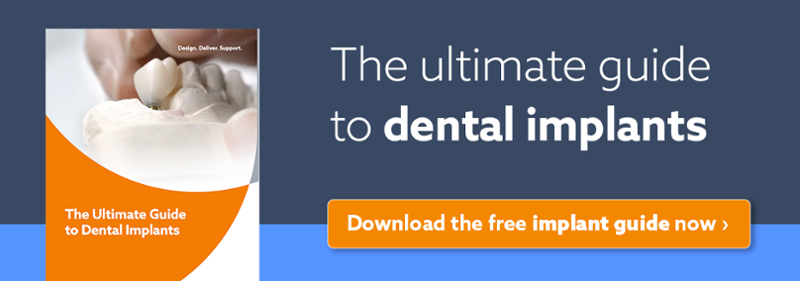Fixed implant bridges help to restore a patient’s dental appearance and give back the ability to comfortably chew food. Treatment for fixed implant bridges is a multi-step process that requires significant planning and time to complete. Patients who are considering a fixed implant bridge should be aware that full treatment may take several months or up to one year to finish. The length of treatment time will depend on whether or not additional procedures, such as bone or sinus grafting, are required, and the following general steps.

Medical and Dental History
The very first step when assessing a patient’s suitability for treatment is to review their medical history and current dental health. While most people are suitable for treatment, diseases affecting the immune system may lead to a poor long-term prognosis. Diabetes is one such condition, but if the disease is controlled, implant treatment may still be a suitable choice.
Remove Any Failing Teeth
Any failing teeth must be removed and the clinician has to decide whether to immediately place dental implants or if the area will be left to heal before implant surgery. When teeth are removed, they may need to be replaced with an immediate denture or a temporary bridge, which should be fabricated before removal.
Diagnostic Testing
Precursory diagnostic tests include a cone beam CT scan and digital dental x-rays. The 3-D images produced by a CT scan allow an implant dentist to meticulously plan each implant placement. Great care must be taken to avoid essential structures, particularly nerves, sinus cavities, and blood vessels. The implants must be located in a manner that yields full restoration and provides good esthetics and functionality. Diagnostic images will also determine the quantity and quality of available bone, allowing clinicians to conclude whether bone grafting is necessary or not.
Bone Grafting
Often, a minimal amount of bone grafting material may be placed at the same time as dental implants. Otherwise, a stand-alone procedure is required. If a stand-alone procedure is performed, the grafting site must be left undisturbed for several months- until the bone has sufficient quantity and density to support dental implants.
Using Computer Guided Surgery
Not all surgeons will use this technique, but an increasing number of clinicians are choosing to use computer-guided surgery. This utilizes cone beam CT scans to create a CAD/CAM-milled surgical guide. Computer-guided surgery can provide patients with a quicker, smoother, and more-comfortable treatment.
Immediate Loading after Implant Surgery
Prior to surgery, clinicians will decide if the implants will be left undisturbed until osseointegration is completed, or if they will be suitable for immediate loading. It is becoming more common to immediately load dental implants, usually with temporary restorations that hold the dental implants firmly in place and prevent unwanted movement. In other cases, restorations are left out of occlusion. These temporary restorations are generally for esthetic purposes, as care needs to be taken not to place too much pressure on the dental implants while healing. If the implants are not to be immediately loaded, a temporary restoration can still be made prior to implant surgery or where a denture was previously worn. This may be adapted to fit.
Making and Fitting the Final Restorations
After the dental implants have fully healed and osseointegration is complete, the final restorations can be made. Any healing caps or temporary restorations are removed and impression copings can be placed onto the implants. After this step, an impression is taken. Using the impression, abutments and the implant bridge framework can be created on a soft tissue model. Sometimes this framework will be tested for fit. The permanent bridge may be checked again at the bisque-bake stage before being finished and cemented or screwed in place.
Please be reminded that should you wish to discuss a case in more detail, our experienced technical team is here to assist you.
Click here to schedule a consultation with our technical team »
